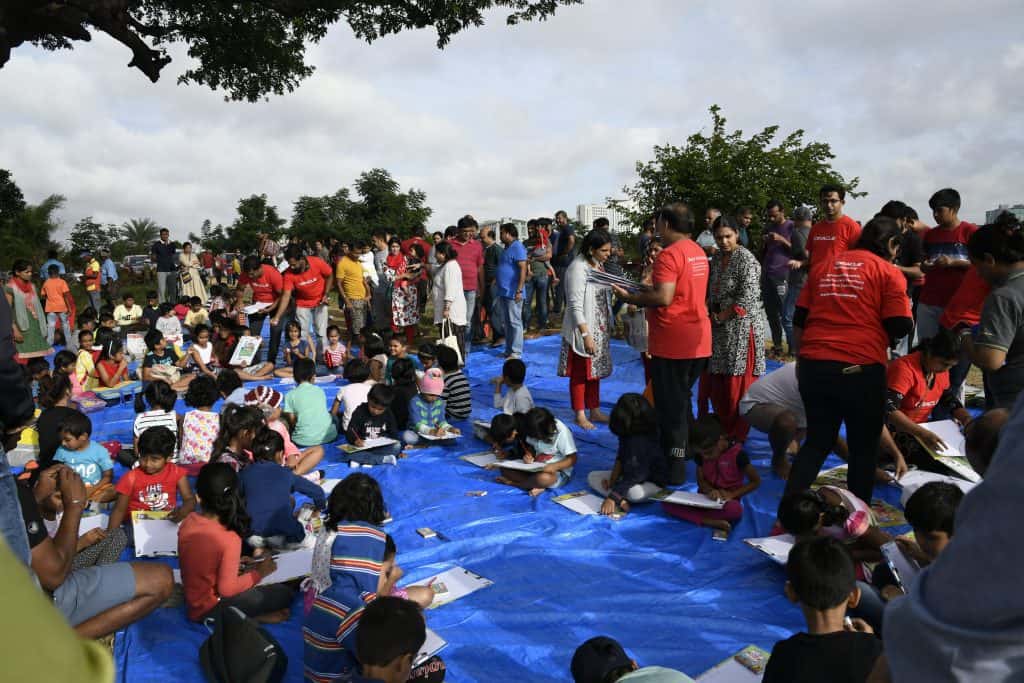It was a show of creativity and colours in Whitefield on Saturday morning. As the sun and clouds played hide-and-seek, scores of children made a beeline for Nallurhalli lake to use their imagination and depict their natural surroundings.
‘My Halli, My Lake’, an initiative of Nallurhalli Rising, brought together more than 160 children, aged between three and sixteen years. Many students from Poorna Prajna International School were part of the enthusiastic crowd.
The citizens’ group Whitefield Rising was the community partner. Oracle India Ltd provided the materials for painting – drawing sheets, pencils, erasers, water colours, crayons and pads.

Around 160 children participated in the drawing competition at Nallurhalli lake premises. Pic: Shanthi Chandola
For those heading to the lake early during a weekend, it was a time of fun and frolic – a time to celebrate the flora and fauna. The entries were judged by Poonam Illuri and Anjani Rane, and prizes were given away to the winners.
Nallurhalli lake is in the centre of Whitefield, flanked by Borewell Road, the Export Processing Industrial Park (EPIP) and the Ecumenical Christian Centre. Years of citizen efforts have ensured that the water body continues to survive, though the lake’s periphery still witnesses regular dumping of waste of all hues.
Petitions and appeals to the administration to preserve the precious water body – to fence it, remove encroachments, stop garbage dumping and sewage inflow – go back to 2008. The efforts in the last five years – including planting of numerous saplings in a corner of the lake – have yielded results, with the water seemingly cleaner and birds staging a comeback.

Citizen efforts to clean up Nallurhalli lake has yielded results. Pic: Shanthi Chandola
Sasidharan Unnithan, a resident in the neighbourhood, said, “Great idea to have such a nice gathering with children and parents in the name of drawing competition, while spreading a beautiful message on the need to keep the waterbody alive and clean for now and future generations. Thanks to the organisers for arranging such an extraordinary event.”